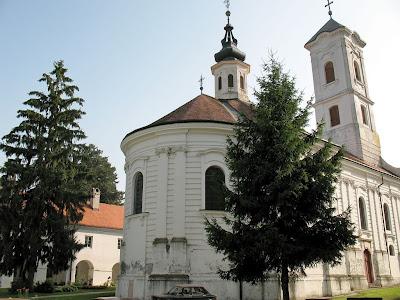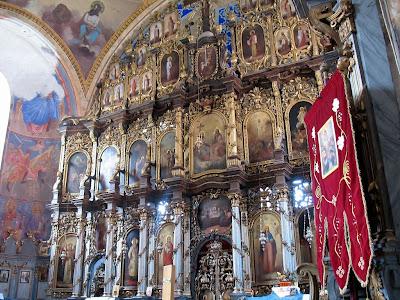
Going on with the series about the beautiful monasteries of the Fruska Gora (the only mount of the extended flat Vojvodina region in the National Park of Fruska Gora which is also a well know tourist destination). The links to the first 5 monasteries of the series (Velika Remeta, Novo Hapovo, Krusedol, Jazak and Beocin) are on the bottom of this post.
The Vrdnik-Ravnica Monastery (Манастир Врдник-Раваница).
The Vrdnik-Ravanica Monastery, with a church dedicated to the Resurrection of Christ, was built in the 16th century on the southern slopes of the Mount Fruška Gora. In a Turkish defter, it is mentioned as the “Monastery of Saint John nearby helmet Vrdnik.” After the Great Migration of Serbs in 1690, it was populated by monks from the Ravanica Monastery near Cuprija, and ever since has often been referred to as the “Ravanica of Srem.”
The monks from Ravanica had to flee from the Turks in order to safeguard their treasures and the holy relics of Prince Lazar, so they found this place where they renovated the Vrdnik Church, changed its dedication, and reestablished the cult of the Prince Lazar.
A bigger church was built in 1811, during the Metropolitan Stefan Stratimirović, whereas on the site of the smaller church, a stone cross was placed. Based on the project of Kosta Zmijanović, the work was undertaken by Kornelije Srbin from Novi Sad. It is a single-nave building of large dimensions, with a small dome conspicuously out of scale with the rest of the edifice, a round apse and rectangular choirs. Soaring above the narthex with the choir gallery is a three-storied baroque campanile. Façades are enlivened with pilasters topped by classical capitals and large, rounded window openings.

Frescoes, executed in the spirit of Romanticism, are work of Dimitrije Avramović, who also painted the iconostasis. Lavish and assorted woodcarving of the iconostasis, characterized by pronounced symmetry in tune with the classicist spirit, was done by Marko Vujatović. The most elaborate restoration in the post-WWII period was undertaken between 1987 and 1990.
(The text,slightly adapted, and the cover picture are from Spomenici kulture u Srbiji)
Travel Tips: Fruska Gora Monasteries Overview
Velika Remeta Monastery in Fruska Gora
Novo Hapovo Monastery in Fruska Gora
Krusedol Monastery in Fruska Gora
Jazak Monastery in Fruska Gora
Beocin Monastery in Fruska Gora
